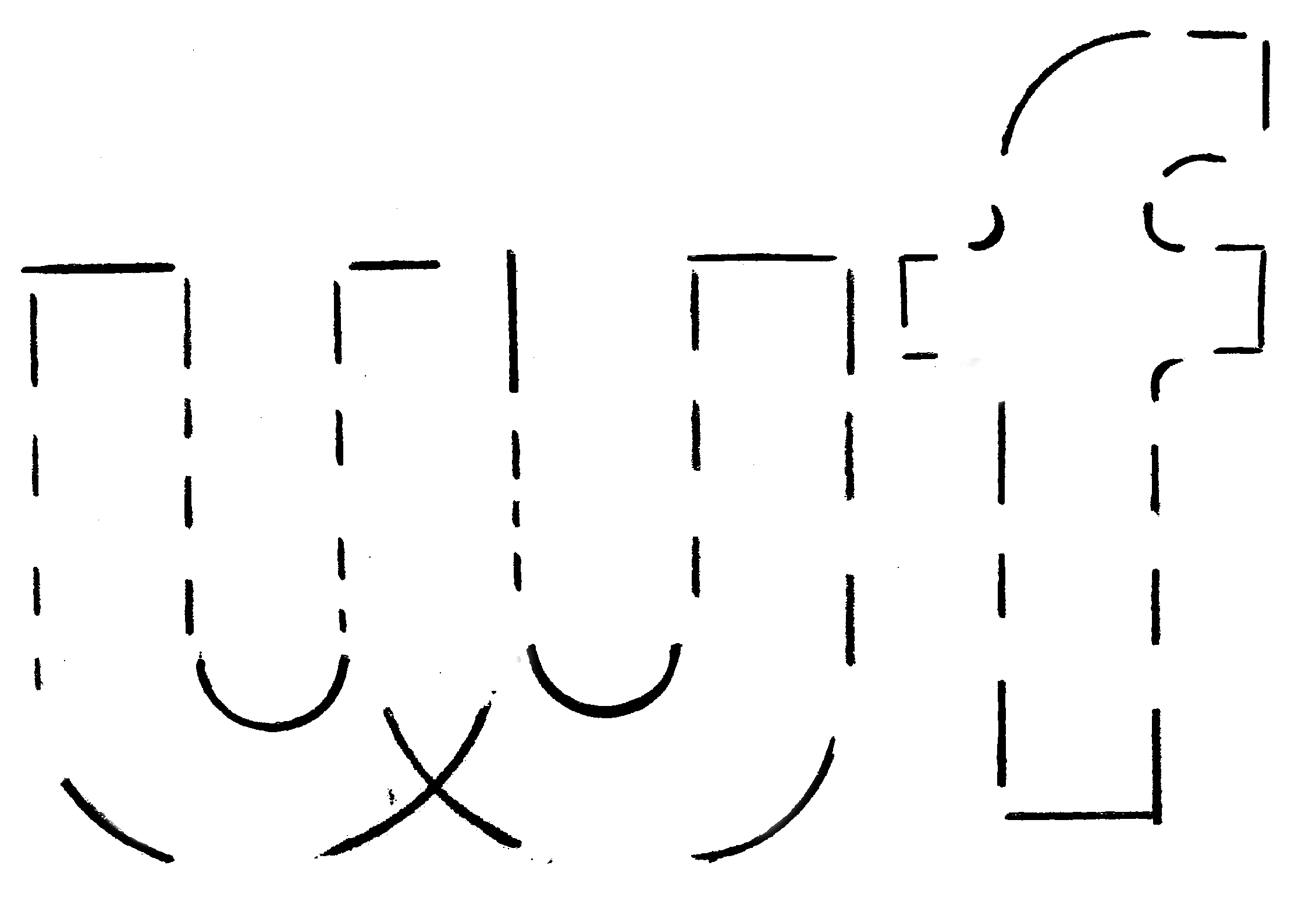apparatus for the circulation of Indigenous voices and ideas into the air
Description:
Apparatus for the circulation of Indigenous voices and ideas into the air was an exhibition by Duane Linklater inspired by Wawatay Radio—a network of radio stations in Northern Ontario that broadcasts stories, news, and music primarily in the Oji-Cree language. At the core of the exhibition was an AM radio transmitter that was moved from Linklater’s home in North Bay, Ontario to Western Front’s gallery. Broadcasting at 1700 AM, the station was offered as a space to the Indigenous community of Vancouver to use freely, or to broadcast their own songs, ideas, voices, poems, noise, jokes, complaints, grievances, readings, ramblings, and conversations for the duration of the exhibition.
A microphone, turntable, mixer, and other pieces of radio equipment were positioned on a table at the centre of the gallery, while the transmitter was secured to a tripod on top of a large speaker. A pair of hand dyed snowshoes, blue tarp, pink fabric, and painted rocks were added to the transmitter’s supports, rendering the structure into a sculptural form.
Apparatus for the circulation of Indigenous voices and ideas into the air also served as the platform to launch EHEPIK records, a label initiated by Linklater that focused on releasing work by Indigenous artists. EHEPIK published a set of four 7'' vinyl records featuring Layli Long Soldier, Laura Ortman, Elisa Harkins, and grey plumes—a musical collaboration between Duane Linklater, Tanya Lukin-Linklater, and Raven Chacon. The records were played in the gallery and broadcast through the transmitter, extending the ideas of Linklater’s project beyond the physical radius of Western Front.
The exhibition also featured sculptural work and digital prints, four of which were dedicated to the artists published on EHEPIK. Boys don’t cry (2017), Linklater’s large-scale assemblage of hand-dyed panels, brings together images depicting Linklater’s hand, Robert Smith of The Cure, an excerpt of graffiti on Alcatraz Island that reads “Custer had it coming,” the logo of the American Indian Movement dyed pink, Indigenous session musician Jesse Ed Davis, and a reproduction of George Caleb Bingham’s painting Fur Traders Descending the Missouri (1845). Spanning fifteen feet across the gallery wall opposite the radio station, the artwork presents a constellation of references, relations, and memories that carry personal resonance for Linklater, while also speaking to shared experiences of identity formation through visual and popular culture.
Linklater's exhibition apparatus for the circulation of Indigenous voices and ideas into the air was presented with support from the Canada Council for the Arts.
Curated by Pablo de Ocampo.
Documents:
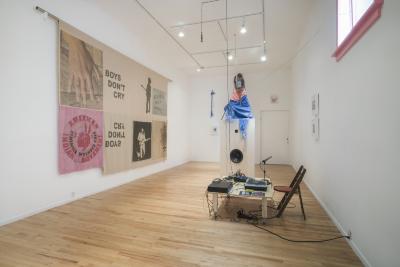
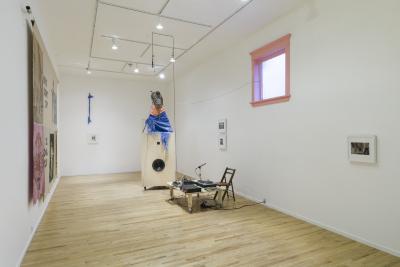
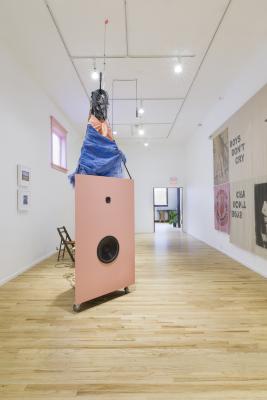
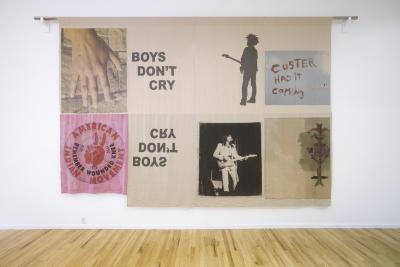

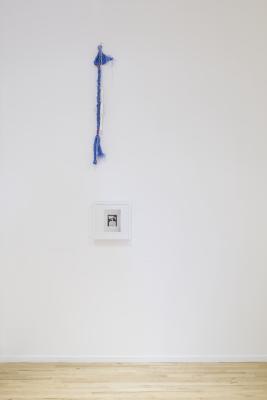
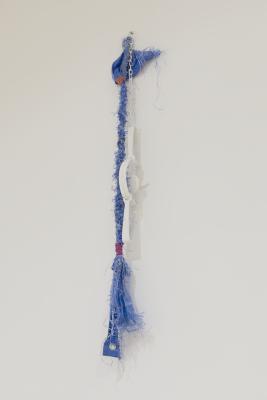
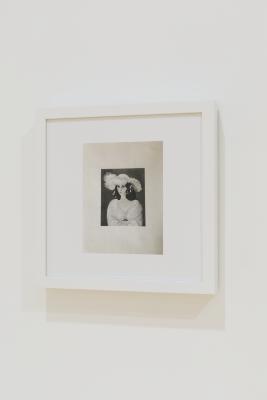
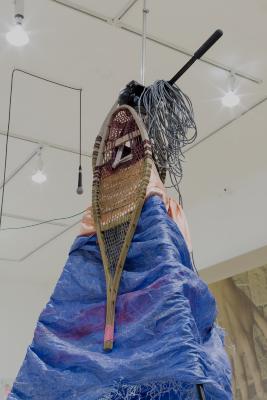
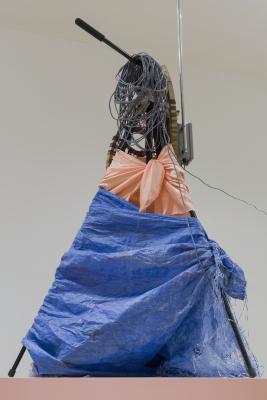
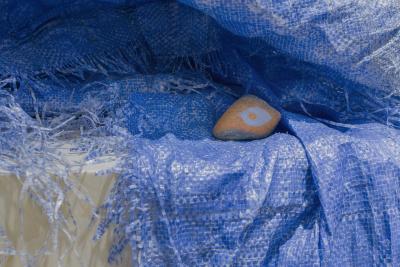
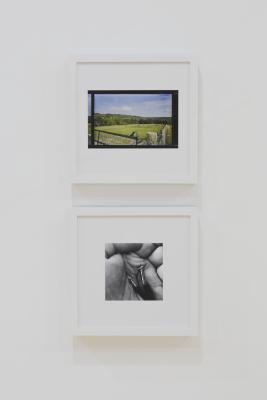
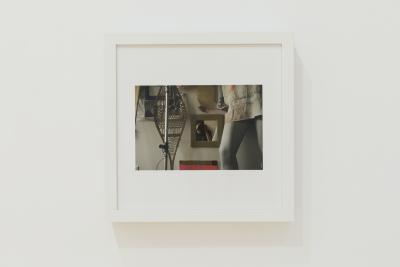
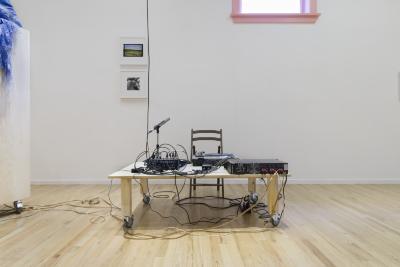
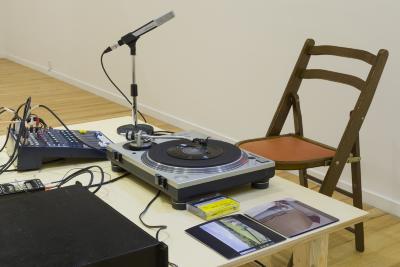
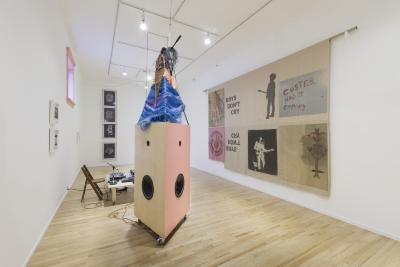
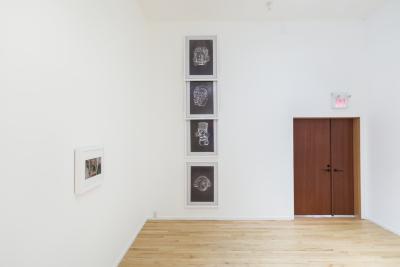
Related People
Captions:
- Duane Linklater: apparatus for the circulation of Indigenous voices and ideas into the air, installation view, Nov 10 – Dec 16, 2017. Photo by Dennis Ha.
- Duane Linklater: apparatus for the circulation of Indigenous voices and ideas into the air, installation view, Nov 10 – Dec 16, 2017. Photo by Dennis Ha.
- Duane Linklater: apparatus for the circulation of Indigenous voices and ideas into the air, installation view, Nov 10 – Dec 16, 2017. Photo by Dennis Ha.
- Duane Linklater, boys don’t cry (2017). Photo by Dennis Ha.
- Duane Linklater, boys don’t cry (2017), detail. Photo by Dennis Ha.
- Duane Linklater: apparatus for the circulation of Indigenous voices and ideas into the air, installation view, Nov 10 – Dec 16, 2017. Photo by Dennis Ha.
- Duane Linklater, blues for the grasses (2017). Photo by Dennis Ha.
- Duane Linklater, for grey plumes (2017). Photo by Dennis Ha.
- Duane Linklater: apparatus for the circulation of Indigenous voices and ideas into the air, installation view, Nov 10 – Dec 16, 2017. Photo by Dennis Ha.
- Duane Linklater, apparatus for the dissemination of Indigenous ideas and sounds into the air (2017). Photo by Dennis Ha.
- Duane Linklater, apparatus for the dissemination of Indigenous ideas and sounds into the air (2017), detail. Photo by Dennis Ha.
- Duane Linklater: apparatus for the circulation of Indigenous voices and ideas into the air, installation view, Nov 10 – Dec 16, 2017. Photo by Dennis Ha.
- Duane Linklater, for laura ortman (2017), installation view, Nov 10 – Dec 16, 2017. Photo by Dennis Ha.
- Duane Linklater: apparatus for the circulation of Indigenous voices and ideas into the air, installation view, Nov 10 – Dec 16, 2017. Photo by Dennis Ha.
- Duane Linklater: apparatus for the circulation of Indigenous voices and ideas into the air, installation view, Nov 10 – Dec 16, 2017. Photo by Dennis Ha.
- Duane Linklater: apparatus for the circulation of Indigenous voices and ideas into the air, installation view, Nov 10 – Dec 16, 2017. Photo by Dennis Ha.
- Duane Linklater: apparatus for the circulation of Indigenous voices and ideas into the air, installation view, Nov 10 – Dec 16, 2017. Photo by Dennis Ha.
